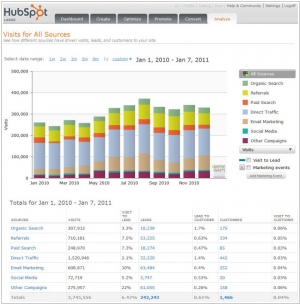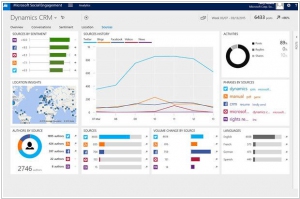HubSpot vs Microsoft Dynamics 365
March 16, 2025 | Author: Sandeep Sharma
62★
HubSpot offers a full stack of software for marketing, sales, and customer service, with a completely free CRM at its core. They’re powerful alone — but even better when used together.
20★
With intelligent business applications across CRM and ERP, Microsoft Dynamics 365 gives you choice. Start with just what you need to run your business—and delight your customers. And then add apps as your needs change.
See also:
Top 10 CRM software
Top 10 CRM software
HubSpot and Microsoft Dynamics 365 are both sophisticated attempts to tame the wild, unpredictable beast known as customer relationships. They promise AI-powered insights, seamless integrations and an unwavering dedication to helping salespeople remember which customer they were supposed to follow up with last Tuesday. Both live in the cloud, both have a sales pipeline (presumably to transport money from customers to the company) and both insist they will revolutionize the way you do business—just as long as you actually use them.
HubSpot, having been around since 2006, was born in the USA and has a particular fondness for small and mid-sized businesses that don’t yet know they need a CRM. It specializes in inbound marketing, which is essentially the art of making customers think it was their idea to buy something in the first place. It also has a freemium model, meaning you can poke around and use a few features for free, before inevitably realizing that the good stuff requires money. It’s user-friendly, too—like the kind of friendly salesperson who helps you find what you need without making you feel like you're being hunted.
Microsoft Dynamics 365, meanwhile, is the serious, suit-wearing older sibling that arrived in 2016 with a full corporate entourage. Also American (because apparently, America loves CRMs), it’s designed for large enterprises that enjoy complexity, deep integration with Microsoft’s empire and the ability to control vast amounts of data with a few well-placed clicks—assuming they’ve hired someone who knows which clicks to place. It’s highly customizable, but with great power comes great responsibility (and possibly a few expensive consultants). Unlike HubSpot, which wants to gently guide you toward marketing enlightenment, Dynamics 365 assumes you already know what you're doing and simply need a towering stack of enterprise-grade features to rule over.
See also: Top 10 CRM software
HubSpot, having been around since 2006, was born in the USA and has a particular fondness for small and mid-sized businesses that don’t yet know they need a CRM. It specializes in inbound marketing, which is essentially the art of making customers think it was their idea to buy something in the first place. It also has a freemium model, meaning you can poke around and use a few features for free, before inevitably realizing that the good stuff requires money. It’s user-friendly, too—like the kind of friendly salesperson who helps you find what you need without making you feel like you're being hunted.
Microsoft Dynamics 365, meanwhile, is the serious, suit-wearing older sibling that arrived in 2016 with a full corporate entourage. Also American (because apparently, America loves CRMs), it’s designed for large enterprises that enjoy complexity, deep integration with Microsoft’s empire and the ability to control vast amounts of data with a few well-placed clicks—assuming they’ve hired someone who knows which clicks to place. It’s highly customizable, but with great power comes great responsibility (and possibly a few expensive consultants). Unlike HubSpot, which wants to gently guide you toward marketing enlightenment, Dynamics 365 assumes you already know what you're doing and simply need a towering stack of enterprise-grade features to rule over.
See also: Top 10 CRM software





